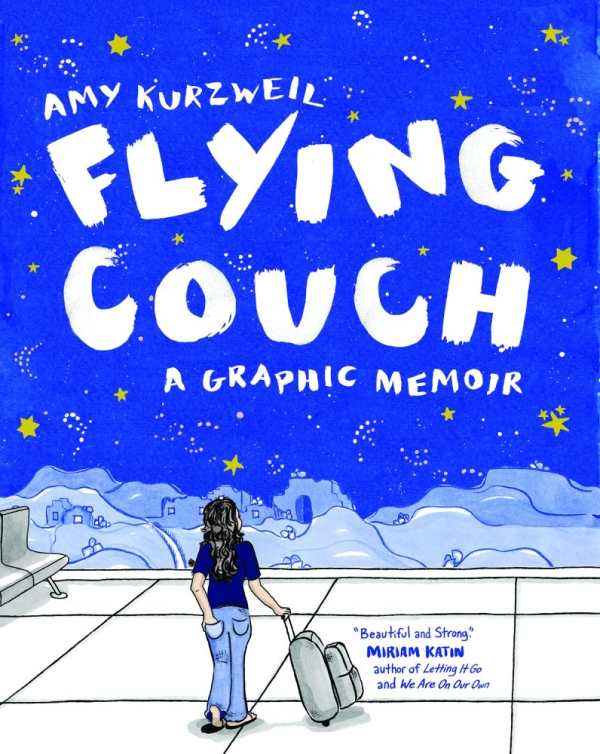Flying Couch
Amy Kurzweil’s Flying Couch: A Graphic Memoir is a bit unusual as memoirs go—though it is the story of her life thus far, Kurzweil’s account is largely absent of the kind of physical or emotional traumas that too often seem to be a requirement in memoirs. She’s honest about her efforts to live a life that’s independent but that still incorporates her family, including her mother, who is a psychotherapist, and her grandmother Bubbe, a Holocaust survivor. Kurzweil tells the stories of all three, but Bubbe’s harrowing stories of survival naturally dominate the book, with an immediacy that Kurzweil’s own life lacks. In recognizing this, however, Kurzweil is able to merge her grandmother’s tale into a larger work about a young woman finding her way in the world. Kurzweil also uses humor throughout Flying Couch, which helps to provide a common thread amid the poignant, the sublime, and the commonplace.
Kurzweil’s black-and-white art is expressive, and she uses creative touches like a Chutes-and-Ladders-inspired game board to illustrate the potential benefits and hazards of life in New York City, and plenty of drawings from maps and photographs.
The book’s title is a nod to the infamous “psychotherapist’s couch,” and as Kurzweil takes the influences of her mother’s training and her grandmother’s experiences, and reflects on her own life, it’s easy to relate to her efforts to find individuality without casting off the love and protection of family. Young people, in particular, should find Flying Couch an enjoyable and edifying read.
Reviewed by
Peter Dabbene
Disclosure: This article is not an endorsement, but a review. The publisher of this book provided free copies of the book to have their book reviewed by a professional reviewer. No fee was paid by the publisher for this review. Foreword Reviews only recommends books that we love. Foreword Magazine, Inc. is disclosing this in accordance with the Federal Trade Commission’s 16 CFR, Part 255.

